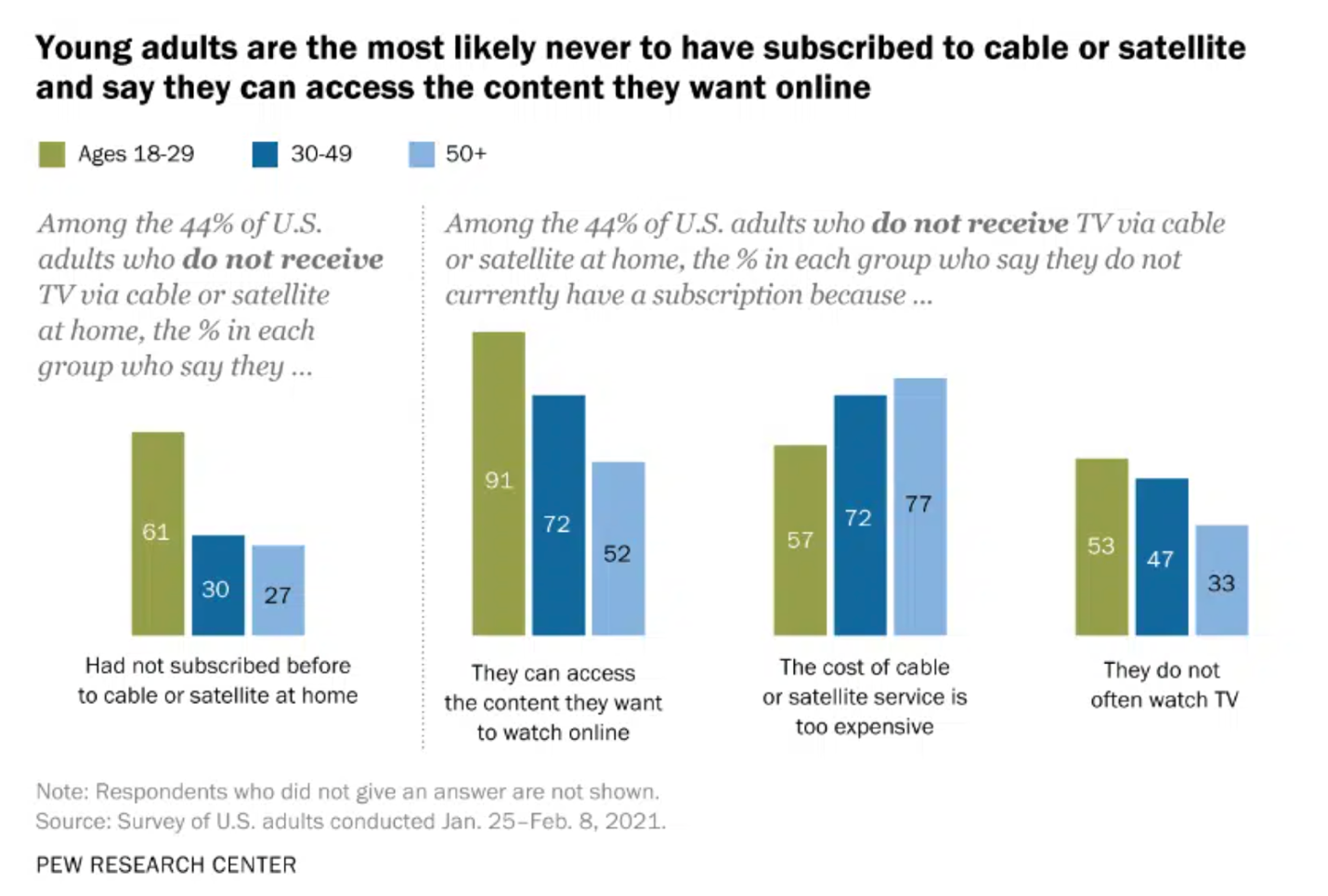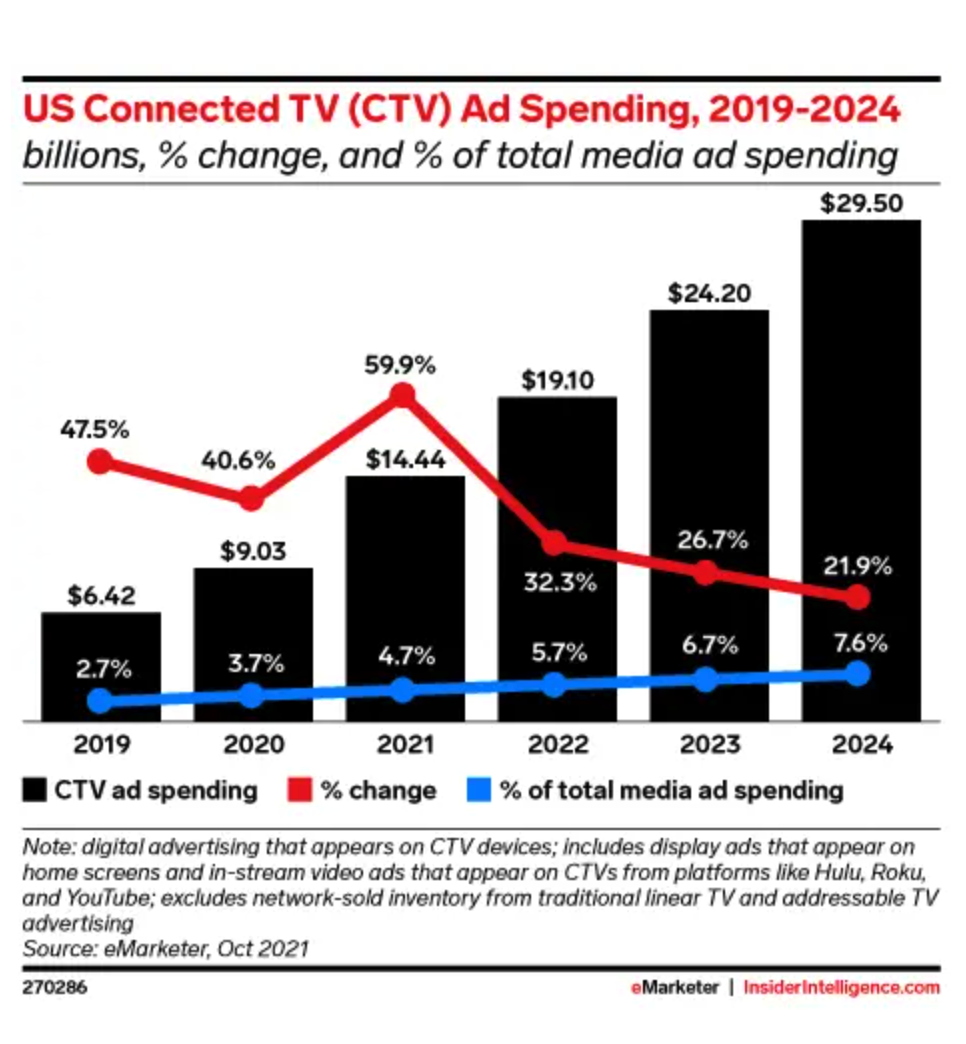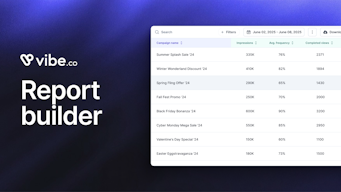What is Programmatic Advertising?
Sometimes it feels like the ad tech industry enjoys throwing around confusing terms and concepts that leave everyone else scratching their heads. And if you’re starting to hear the term "Programmatic TV Advertising" thrown around a lot, you may be in that boat, wondering what it means and why it matters. But have no fear - this topic isn't as complex as it may initially appear. Stick with us a little longer, and everything will soon become clear.
In this article, we’re going to clear up any confusion by covering the following topics:
- What is Programmatic TV Advertising?
- How does it work?
- Why you should be using it!
And hopefully, by the end, you'll have a solid grasp on this new wave of advertising technology and why it's changing the game in television advertising.
What Does "Programmatic" Even Mean?
Let's start by decoding the term 'programmatic'. In the realm of digital advertising, programmatic refers to the automated buying and selling of online ad space. A contrast to traditional methods of purchasing ads, where digital space is bought in bulk and negotiated manually, programmatic advertising uses algorithms and machine learning to buy and place ads in real-time.
This automated process isn’t only about efficiency – it's about effectiveness too. In fact, it allows for precise targeting, as it uses data to decide which ads are shown to which consumers, and when. This, in turn, increases the chances of your ad being seen by the audience most likely to be interested in your product or service.
But what happens when we combine this programmatic concept with television advertising? That's what we’ll dive into next.
So... What Is Programmatic TV Advertising?
Now that you've wrapped your head around the concept of programmatic, let's see how it plays out in the world of television. Programmatic TV advertising, simply put, is the application of programmatic buying and data-driven decision-making to the television advertising landscape.
As mentioned earlier, it used to be the case that TV ad slots were sold and purchased in advance, in bulk, and were primarily based on broad demographic data like age and gender. For example, if a TV program was particularly popular amongst a certain age demographic, advertisers would buy up all the ad space to target that audience.
TV advertising was and continues to be, highly effective. In fact, its effectiveness has increased over time, quadrupling from 11% in the 1980s to 40% in 2016*. And this is without the precision of targeted, algorithm-driven programmatic advertising.

Despite its effectiveness, traditional TV advertising has a few problems. Firstly, it involves a lot of guesswork. Would people who watch Buffy the Vampire Slayer also want to buy your new skincare product? Secondly, it meant that advertisers were stuck with a certain amount of ad space, regardless of how many people actually saw the ad. And calculating viewer numbers was difficult and unreliable.
With programmatic TV advertising, things are different. It uses advanced algorithms and real-time data to automate the buying process, allowing for better targeting, improved efficiency, and ultimately, more effective ad campaigns. Advertisers can now reach audiences based on a wealth of data such as viewing habits, interests, location, and more. So, rather than broadcasting an ad to everyone watching a particular show, you could, for instance, target viewers who are likely to be interested in your product based on their past viewing habits and interests. Better segmentation, better targeting, and of course, better ROI!
But how does it do this? Well, the way people watch TV has changed in recent years and this has opened up the door for programmatic TV advertising. Modern TVs come with internet-connected features such as streaming services, on-demand content, and interactive apps. This is often referred to as "Advanced TV" and it's what allows programmatic TV advertising to thrive.
The younger generation, in particular, is now more likely to forego traditional TV entirely in favour of internet-enabled TVs, streaming services and apps. This means that programmatic TV advertising is the best way forward if you want to connect with these “cable cutters”**.

The real beauty of programmatic TV advertising is that it brings together the wide reach of traditional television and the precision of digital advertising. This combination gives brands a powerful tool to reach the right audience, at the right time, with the right message. Stay tuned (pun intended), as we dive into why brands need to embrace this cutting-edge technology in their marketing strategies.
Why Do Brands Need Programmatic TV Advertising?
Advertisers have well and truly sat up and taken notice of the potential of programmatic TV advertising. In 2021, 60% of advertisers said they were moving their ad spend away from traditional TV towards Connected TV and Over-The-Top (OTT) marketing. OTT refers to services such as Netflix, Hulu and Amazon Prime that are accessed over the Internet rather than via traditional cable or satellite connections. Connected TV refers to TVs that are connected to the internet, either through a built-in connection or an external device like a set-top box.
Connected TV advertising spending alone is predicted to reach almost $30 billion in the US by 2024.*** And this year, it's estimated that 75% of CTV ad spend will be spent programmatically. In the words of Ashley Luongo, Senior Vice President of Advanced Advertising Sales at NBCUniversal, "It’s the most dynamic, sophisticated, agile way of buying media."
These numbers point to a clear trend – the days of traditional TV advertising are numbered and brands that don't join the new wave of programmatic TV advertising are going to get left behind.

It's not surprising really, with OTT and CTV viewership numbers climbing steadily each year, making programmatic TV advertising far more accurate and far more accessible. Ever since Covid, when CTV viewing time jumped by 81%, people have been increasingly tuning in to these platforms over traditional television. This shift makes programmatic TV advertising an absolute must for marketers who want to stay ahead of their competitors.
Types of Programmatic TV Advertising
It can get confusing with all the different terms floating around... OTT? CTV? Linear TV? Non-Linear TV? Let's break it down.
Linear Programmatic TV
Linear TV is what we typically think of as traditional TV – where viewers tune into scheduled programs on cable or satellite channels. But linear TV isn't quite how it was in our parent's time – it's become increasingly digitised, which means that in some cases advertisers now have the capability to programmatically purchase advertising space in the same way they would for more modern marketing channels. This allows advertisers to automate the process of buying ad space during specific time slots on specific channels, reaching viewers who are watching these scheduled broadcasts.
Connected TV (CTV)
Connected TV, or CTV, refers to televisions that are connected to the internet and can access content beyond traditional cable or satellite services, including OTT platforms. CTV programmatic advertising means purchasing automated ads that are shown on these internet-connected televisions. The added benefit here is the ability to reach viewers who are shifting away from traditional TV and consuming more content on OTT platforms.
Over-The-Top (OTT)
Over-the-Top, or OTT (Read our in-depth article "What is OTT advertising" here ), is content that's provided directly to viewers over the internet, bypassing traditional cable or satellite TV platforms. OTT programmatic advertising refers to the automatic purchasing of ad space on OTT platforms. This can include both on-demand streaming services (like Netflix, Amazon Prime, or Hulu) and live streaming services.
Addressable TV
Addressable TV advertising is a type of programmatic TV advertising that allows advertisers to target specific households. Unlike traditional TV ads that are broadcasted to all viewers of a program, addressable TV ads use viewer data to deliver targeted ads to specific households. This allows for a high level of personalization, as different households watching the same program can see different ads based on their unique profiles and preferences.
Non-Linear TV
Non-linear TV is television content that can be watched on demand, not tied to a particular schedule. This could be catch-up TV services, video on demand, or online streaming. Non-linear programmatic TV advertising allows advertisers to display ads in this on-demand content. The viewers of non-linear TV tend to be more engaged, as they choose what to watch and when, which can lead to higher ad engagement rates.
Embrace the Future of TV Advertising with Programmatic
In a world where viewers get to pick what they want to watch and when they want to watch it, programmatic TV advertising has boldly stepped onto the scene, shaking up the world of advertising. It harnesses the power of automation and data-driven decisions, carving a new path that steps away from the limitations of traditional TV advertising.
But what does this mean for advertisers? It means that they can reach their audiences with far more efficiency. It means that their advertising dollars are spent more wisely, connecting with viewers who are most likely to be interested in their messages. And for the viewers? They get a more personalised experience, with less time viewing ads that don't matter to them
In the grand scheme of things, Programmatic TV Advertising isn't just changing the game - it's reinventing it, offering a fresh, data-driven approach to the way we think about TV advertising.
*https://www.thinkbox.tv/why-tv/more-effective-than-ever/
**https://www.pewresearch.org/short-reads/2021/03/17/cable-and-satellite-tv-use-has-dropped-dramatically-in-the-u-s-since-2015/
***https://www.deptagency.com/insight/connected-tv-retargeting-digital-advertising/


